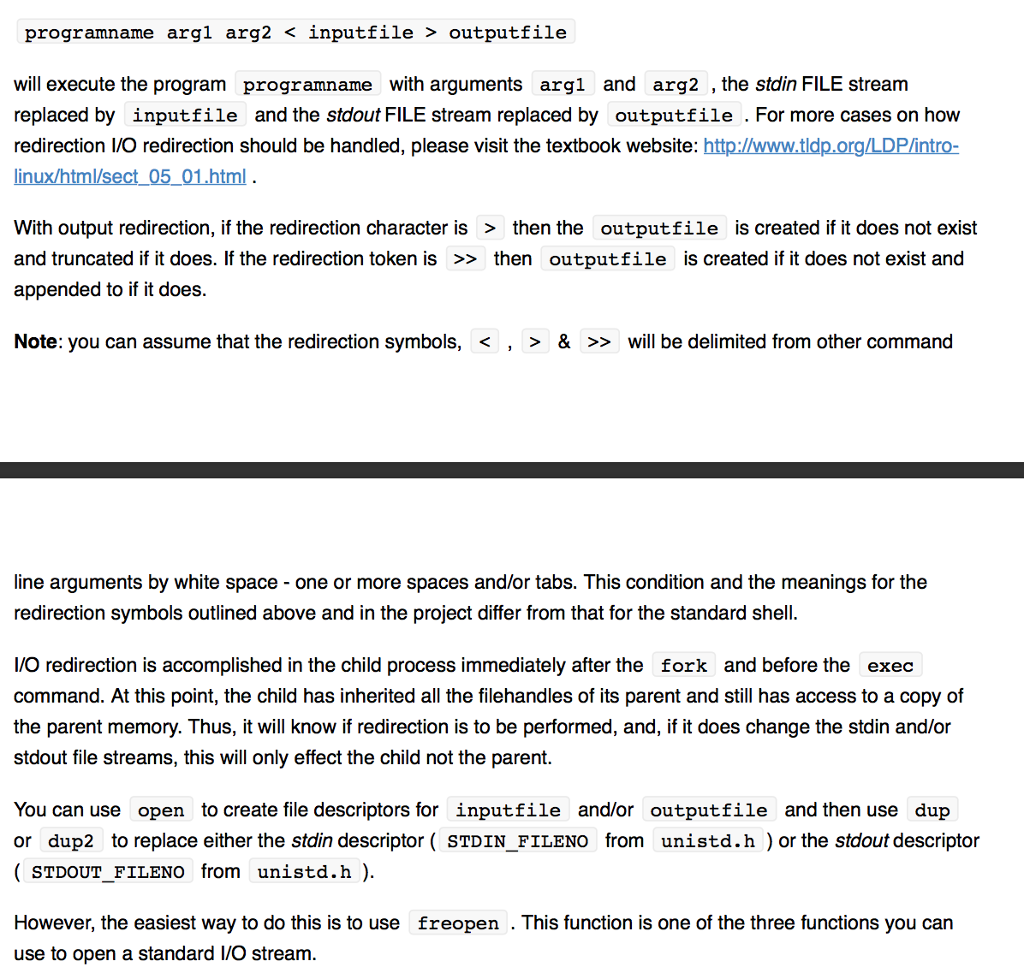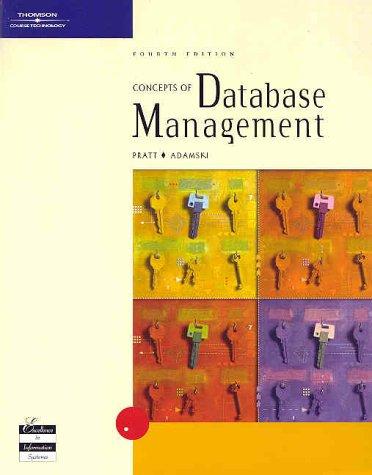Answered step by step
Verified Expert Solution
Question
1 Approved Answer
I/O redirection in a C shell. How do implement I/O redirection in a fork-exec() type system call?(any info on I/O redirection helps) if(command)//command holds the
I/O redirection in a C shell.
How do implement I/O redirection in a fork-exec() type system call?(any info on I/O redirection helps)
if(command)//command holds the system call string { int status; pid_t childpid; switch(childpid = fork()) { case -1: //error printf("Forking error"); return -1; case 0: //child process //pretty sure this is where I/O redirection would occur execl("/bin/sh", "sh", "-c", command, (char*)NULL); default: //parent process waitpid(childpid, &status, WUNTRACED);/ot sure exactly what WUNTRACED IS }//end switch }//end if
here is more info on what im doing if this helps
The line is typed in the command line

Step by Step Solution
There are 3 Steps involved in it
Step: 1

Get Instant Access to Expert-Tailored Solutions
See step-by-step solutions with expert insights and AI powered tools for academic success
Step: 2

Step: 3

Ace Your Homework with AI
Get the answers you need in no time with our AI-driven, step-by-step assistance
Get Started


